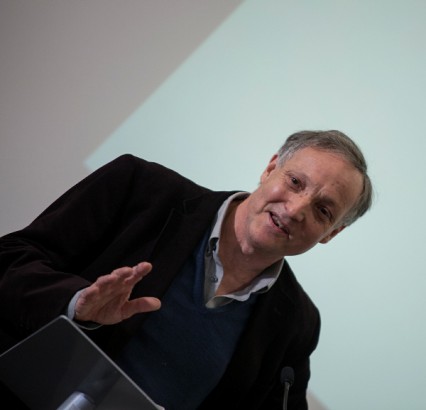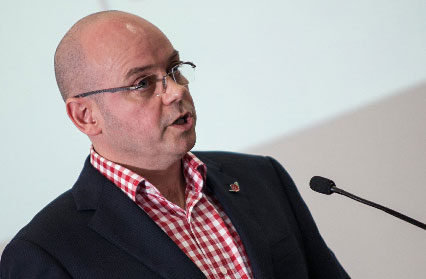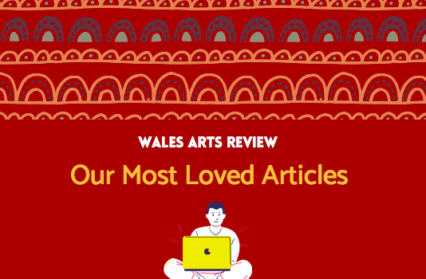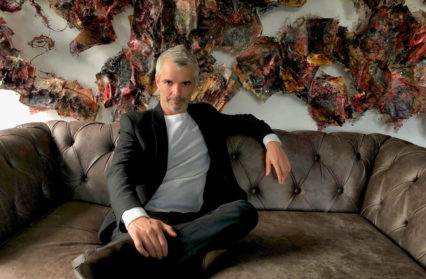Keynote Speech – On November 1st 2014 Wales Arts Review held its second biennial Critics’ Roundtable event at the Wales Millennium Centre in Cardiff. A day of passionate debate was opened with this keynote speech from Wales Arts Review‘s acting Chair and regular contributor, Adam Somerset. Below is both a podcast from the speech on the day and a fuller textual version.
Criticism in 2014 matters. It matters for particular reasons, of which three come to the fore. Although they are distinct they share an element in common. They all tend to inattention, inattention to the art and to the work itself.
The first, the loss of the local respected reviewer, is the most obvious. Two economists from Cambridge were tasked recently to make a study across seven hundred different occupations in the USA. Their conclusion was that forty-seven percent of jobs were at risk over the next fifteen years from replacement by automation; and, by extension, so in Britain. In this respect the world of reviews and criticism has been in the vanguard.

Jonathan Raban in 1987 published For Love and Money, a compilation of reviews, essays and occasional pieces. He was helped by facilitating factors. The Listener had an editor who possessed both funds of some generosity and an eagerness to cultivate fine occasional writing. Raban was able to quit a lectureship at Aberystwyth’s English Department, move to Islington and make a living as a man of letters. It was not an easy or a stable life, but it was feasible. His was the last generation for which the choice would even have been conceivable.
Many an epithet and metaphor of spice has been thrown the way of the critic. Maybe we are indeed the eunuchs in the harem who can only gaze on at what we lack the wherewithal to do ourselves. The great cognitive scientist Margaret Boden offers a useful heuristic in addressing any topic. ‘Consider the opposite’ she advises. Advertising, like criticism, can be critiqued and deconstructed in all manner of ways and its excesses in telemarketing and bulk mailings deplored. But to visit a city where advertising is absent is to inhabit a chilly, creepy place.
It is not up to critics to boost their importance but look instead to the artists themselves. ‘Crucial for us’ says Michael McCarthy of Music Theatre Wales in a public forum at the Critics Round Table. Boswell caught Doctor Johnson on the topic when they journeyed together to the Hebrides in October 1773. ‘A man who tells me my play is very bad’ opines the Doctor, ‘is less my enemy than he who lets it die in silence.’ When Anthony Trollope received his first review he read it so many times he could quote it in its entirety.
MOMA in Machynlleth this season has a room of James Dickson Innes, a selection from the fuller exhibition that was seen at the National Museum. In the room below twenty modern artists have been invited to make their own interpretations of Arenig. It is a scintillating combination and when the exhibition comes to a close it is likely to have left behind no critical trace of any kind. There is indisputably a flurry of critical activity in Welsh writing. But it thins out on the journey north just as the density of population thins out. There is still work in Wales that is deserving of celebration and is allowed to die in silence. Look for a critical voice on Bangor’s exhibition of Mildred Eldridge this summer and it is to look in vain.
The second feature is the culture of profusion or, more rightly, the illusion of profusion. If any industrial sector were thought to be one of surfeit it would be that of electronica. But search for a hand-held gadget controller to fit a sufferer from carpal tunnel syndrome – a condition which the numbs the thumb and first two fingers – and it is hard and bitter. A surface of profusion conceals a spectrum of narrowness.
It is true that a billion blogs and blurts are there to make good the diminution of the local reviewer. A critique is circulating this season whose subject is a university in Wales. In his opening paragraph the author boasts of his credentials as an editor. It is a rambling document without consequence or conclusion. The confusion and vocabulary to one side – ‘Take responsibility. It’s your f***ing job’ is characteristic – it sinks for a good reason. The words ‘I’ or less often ‘me’ feature sixty times. The default mode of the blog and the blurt is unedited solipsism.
Simon Jenkins wrote a long and dense piece on Wales in the wake of the Scots referendum. The seven hundred and fifty pieces of addendum contain a spelling correction, two pieces of genuinely illuminating – and relevant – personal experience and a contribution that adds an item of crucial historical significance. The bulk of the remainder varies in its qualities of entertainment but is disposable as material that enters into dialogue and dialectic with the source article.
Of course there are jewels within the deluge but they are hard to find. Their rarity is for a good reason. Trollope’s An Autobiography is a dry book, not easily recommendable, but he writes about writing from the inside. He is rude about the reviewers who have emerged in his later years but he looks to critics whom he esteems:
‘When making their assertions they have given their reasons, explained their causes, and have carried conviction,’ he writes. Their accomplishment, he goes on, is ‘not without infinite study and the labour of many years.’ The many years may not be strictly necessary, but to generate even four or five paragraphs that hang together takes a little time, albeit assisted, like all exertion, by practice and regularity. This is not to disparage the digital world, not least within a journal that reaches a readership in a hundred countries. But a critical response that circles around ‘fab’ and ‘brilliant’ is thin gruel. Again talk to the artists themselves. They want praise; of course, they do because they are human. But the invariable next comment is ‘at least this person has thought about what I was doing.’
Third: the blunt fact of one aspect of our twenty-first century economy. The payroll for public relations is six times that of journalists. The brute constriction on time and budgets forces speed. The allure of cut-and-paste is omnipresent. It is a fact of our age, and advertorial, where it is obvious, is unobjectionable. But it creeps invisibly.
Feature articles on writers or actors have a tendency to shrink the size of the review. Higher education contains small isolated pockets of pseudo-scholarship where the distinction between writer and subject has blurred. The words may be long and the intention sincere, but it is promotion. The Guardian of 1st November carries a ‘review’ of an interesting-looking new book on a journey up the Danube. Comprising a single paragraph, the prose is bland, reads like a publisher’s hand-out, and is placed next to the book jacket along with an invitation to click and buy. On the old adage, if it looks like an advertisement and smells like an advertisement then it probably is an advertisement.
Does this matter? It matters for at least two reasons. Once it was a Pope or a Medici who gave a thumbs-up or down to a Torrigiano or Ghirlandaio. Today the arts are part-embedded in the public sphere. Women and men of good sense and seriousness, whether on an Aberystwyth hilltop, in Bute Place or Mount Stuart Square, convene, assess and make decisions. Their allocations are assisted at least by comment from the public sphere that is engaged and, most crucially, disinterested. The alternative is the embarrassment of events like ‘the People’s Prize.’ A culture that is bereft of an enlivened self-critique is one that is in hock to public relations. ‘If there is no intellectual, aesthetic, political, spiritual passionate argument about what gets made’ writes Adrian Gill, ‘then the only arbiters of value are the box office and the phone-in.’ And, he might have added, the social media thumbs-up.
This is criticism’s justification for reasons that are practical and expedient. But there is a stronger reason and that is the artists themselves. The art deserves a response that reflects, albeit in small measure, the commitment and intensity that have gone into the making of the work itself. But the critic should not lose a sense of proportion. ‘I am just the messenger’ says that alarming polymath George Steiner. The opinion is the shadow cast by the work. The art is the thing.
Dylan Moore, on a Cyfrwng conference panel in 2012, was pressed as to the reasons for which he wrote. His response was succinct: to continue the work, to illuminate the context, to see connections. Most of all it is to engage in that most human and civilising of activities; it is conversation.
Photographs Courtesy of Emyr Young












